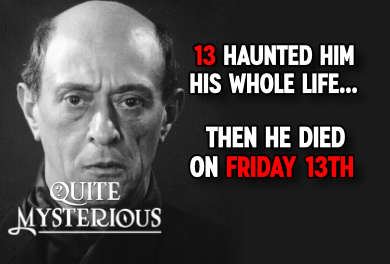Archaeology & History
February 6, 2025 · 2 comments
2 comments

King Harold II's death as depicted on the Bayeux Tapestry. Image Credit: Public Domain
To find it, archaeologists combined ground-penetrating radar with data from earlier excavations and artwork dating back to the 11th century to pinpoint the location of his palace complex.
Particularly notable was data collected from a detailed analysis of a medieval en suite toilet - something typically only associated with individuals of high social status.
The findings indicated that Harold's estate is likely now the site of the village of Bosham near Chichester, West Sussex and that his remains may lie beneath the local church.
This contradicts earlier beliefs that his remains were buried at Waltham Abbey in Essex.
"Looking at all the evidence, it is beyond reasonable doubt that we have now identified the location of King Harold's main power center, the one famously depicted on the Bayeux Tapestry," said Dr Duncan Wright, Senior Lecturer in Medieval Archaeology at Newcastle University.
It just goes to show that, while it might not be on par with anything you'd see in an Indiana Jones movie, even an old toilet can lead to the location of important archaeological discoveries.
Source: Independent | Comments (2)
Medieval toilet leads to discovery of Anglo-Saxon king's long-lost palace
By T.K. RandallFebruary 6, 2025 ·
 2 comments
2 comments
King Harold II's death as depicted on the Bayeux Tapestry. Image Credit: Public Domain
One type of medieval throne has helped archaeologists discover the whereabouts of another.
The location of the palace of King Harold II - Britain's last Anglo-Saxon king who was killed at the Battle of Hastings in 1066 - had remained something of an enigma, but now thanks to a new investigation using data from a rather unlikely source, its whereabouts have been found at last.To find it, archaeologists combined ground-penetrating radar with data from earlier excavations and artwork dating back to the 11th century to pinpoint the location of his palace complex.
Particularly notable was data collected from a detailed analysis of a medieval en suite toilet - something typically only associated with individuals of high social status.
This contradicts earlier beliefs that his remains were buried at Waltham Abbey in Essex.
"Looking at all the evidence, it is beyond reasonable doubt that we have now identified the location of King Harold's main power center, the one famously depicted on the Bayeux Tapestry," said Dr Duncan Wright, Senior Lecturer in Medieval Archaeology at Newcastle University.
It just goes to show that, while it might not be on par with anything you'd see in an Indiana Jones movie, even an old toilet can lead to the location of important archaeological discoveries.
Source: Independent | Comments (2)

The Unexplained Mysteries
Book of Weird News
AVAILABLE NOW
Take a walk on the weird side with this compilation of some of the weirdest stories ever to grace the pages of a newspaper.
Click here to learn more

Support us on Patreon
BONUS CONTENTFor less than the cost of a cup of coffee, you can gain access to a wide range of exclusive perks including our popular 'Lost Ghost Stories' series.
Click here to learn more
United States and the Americas
Natural World
Space: Astronomy and Astrophysics
Russia and the War in Ukraine
Total Posts: 7,767,993 Topics: 325,012 Members: 203,758
Not a member yet ? Click here to join - registration is free and only takes a moment!
Not a member yet ? Click here to join - registration is free and only takes a moment!



































Please Login or Register to post a comment.